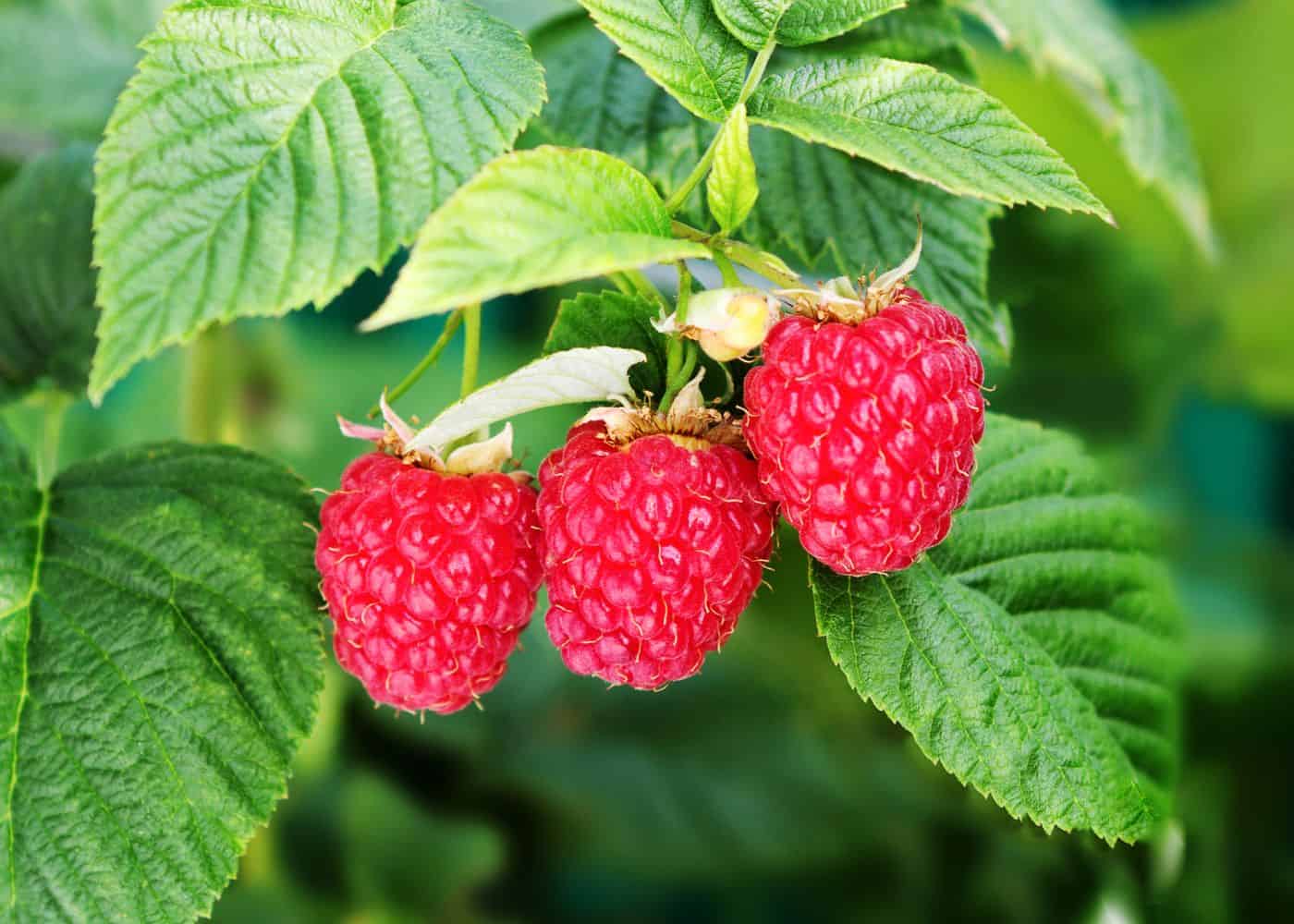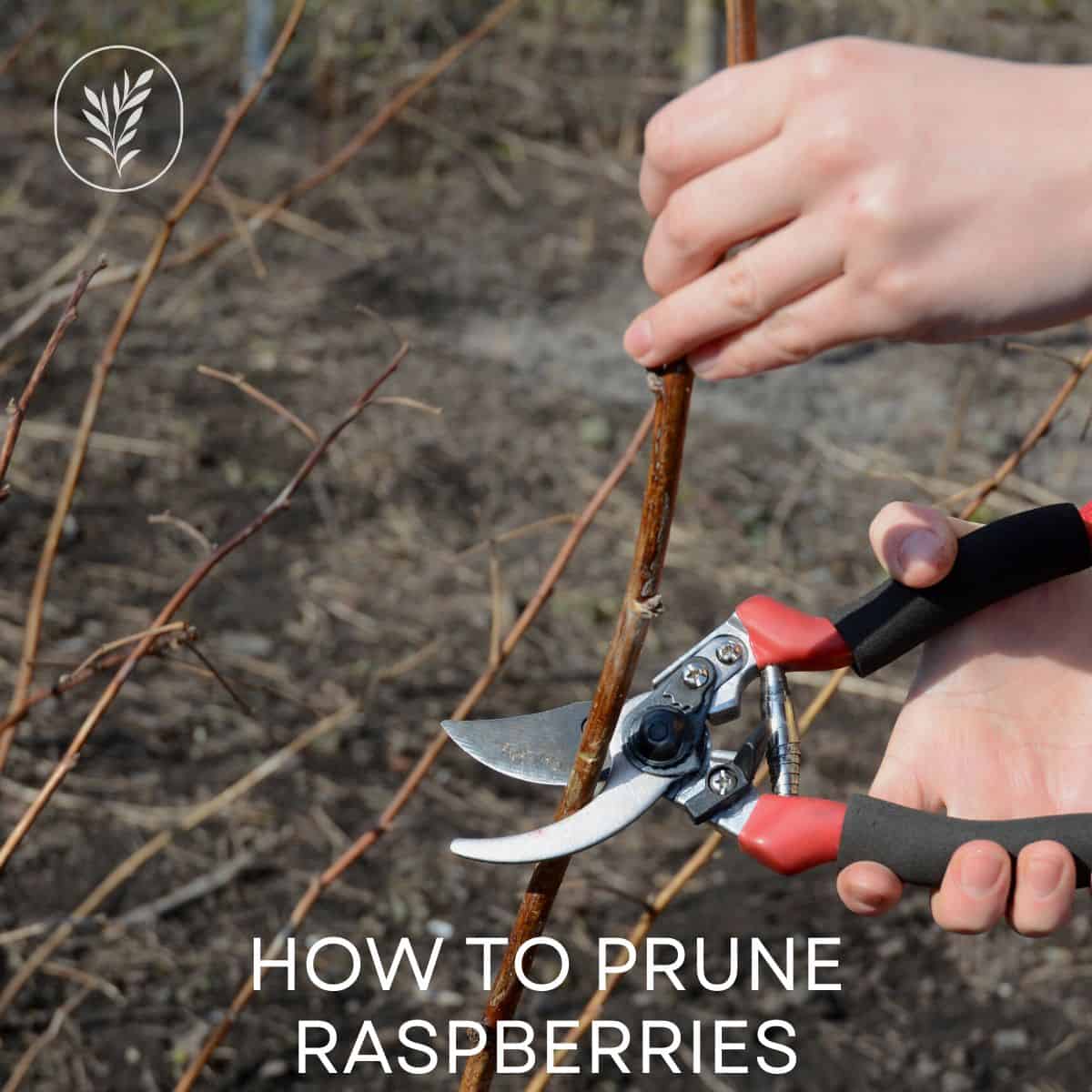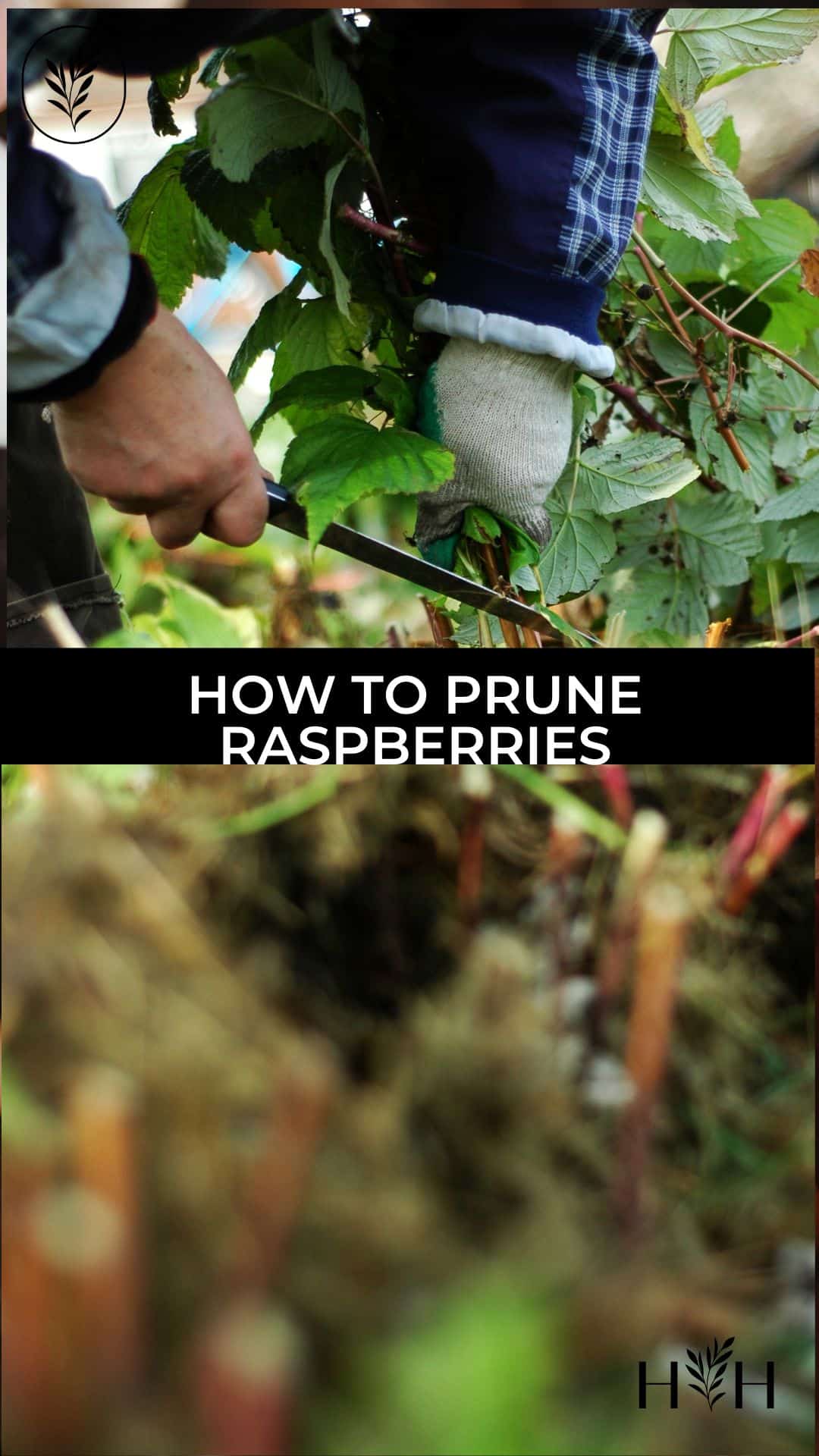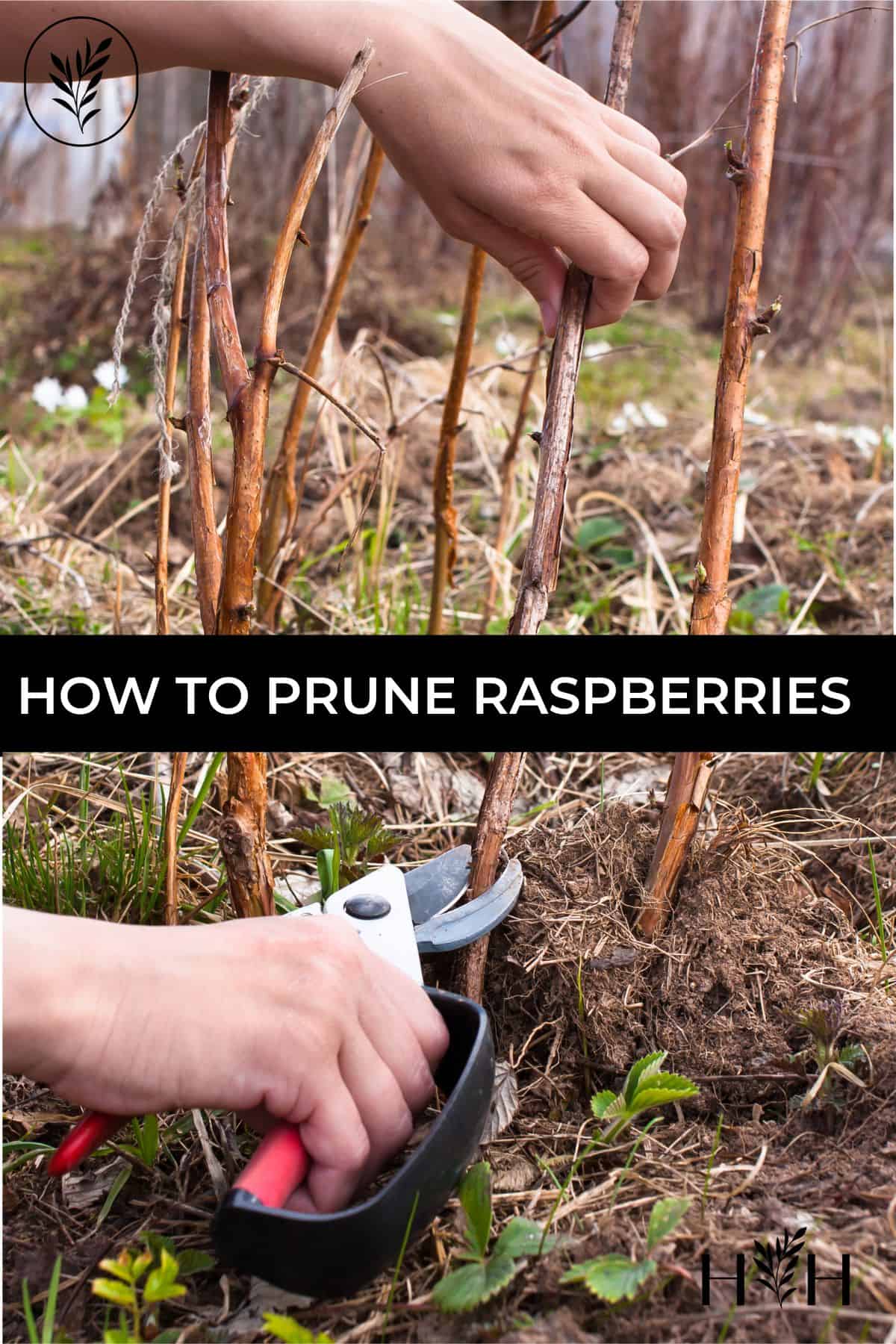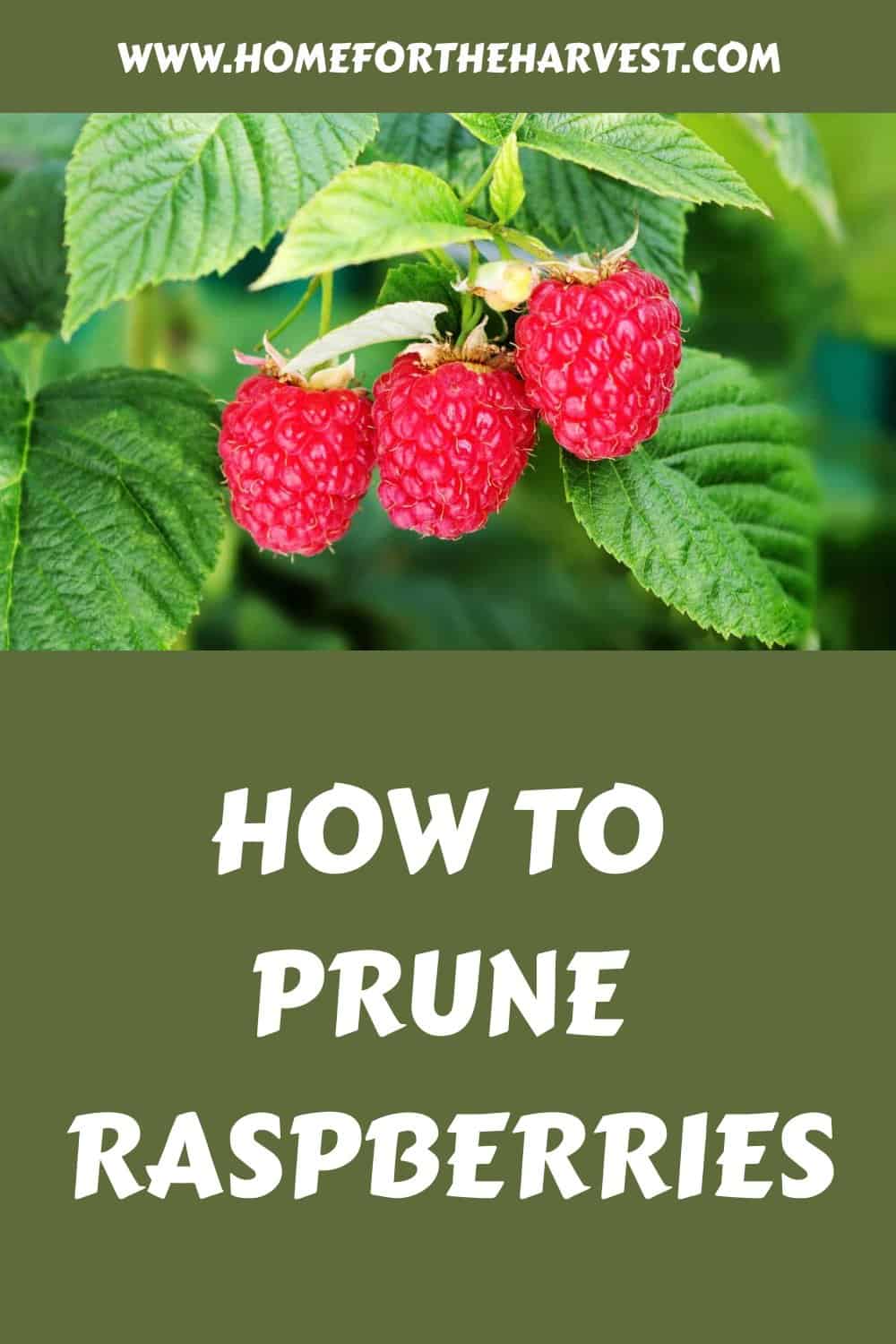When deciding how to prune raspberries, the first step is to figure out what variety/type of raspberries you have because there are two main groups, and they are pruned differently. That said, there are some basics to follow.
Both summer-bearing raspberries and fall-bearing raspberries should be cut right back to the ground at the time of planting. The summer bearers won’t bloom on the stems that sprout during the first year, but the fall bearers will bloom and fruit at the very tips of these fresh stalks in the autumn.
In late fall/early spring, thin out any damaged or diseased canes and then shorten the remaining canes. Summer-bearing canes that haven’t fruited at all yet are usually cut back to a max of 6′ to allow for easy harvesting. Fall-bearing canes can be cut back to wherever they stopped fruiting in the fall.
For existing plants, if you don’t know what kind of raspberries you have, cut them back right to the ground and see what happens. Just be ready to watch and see whether they bloom and fruit during their first year or don’t bloom until the second summer.
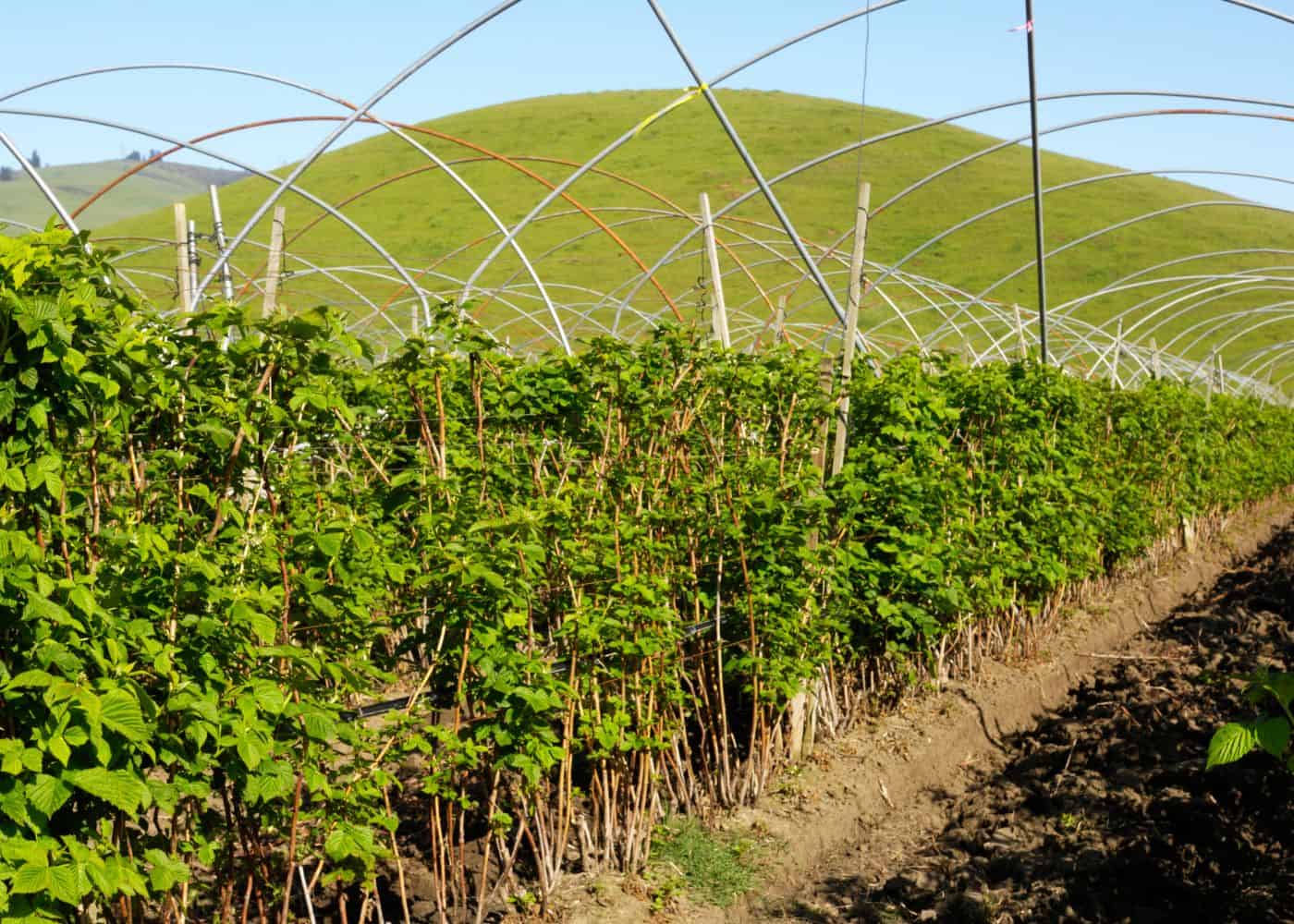
Pruning raspberries
Pruning raspberry plants is pretty simple, but it’s important to know how to do it properly. These plants have perennial roots, but the aboveground canes are biennial. Some varieties have canes that can produce at the end of the first year and on through the second year, while other varieties can only grow fruit in their second year.
Start by cutting out any old canes. Prune the remaining canes back so that there are six to eight main branches and they are spaced out evenly, with about 6″ between canes. Then remove any sucker shoots, which start from the crown at ground level and any dead, weak or diseased canes.
Finally, cut back the new growth that has sprouted since the last pruning. Remove any canes that are growing inward, as these will eventually overlap and block off light and air circulation for other canes.
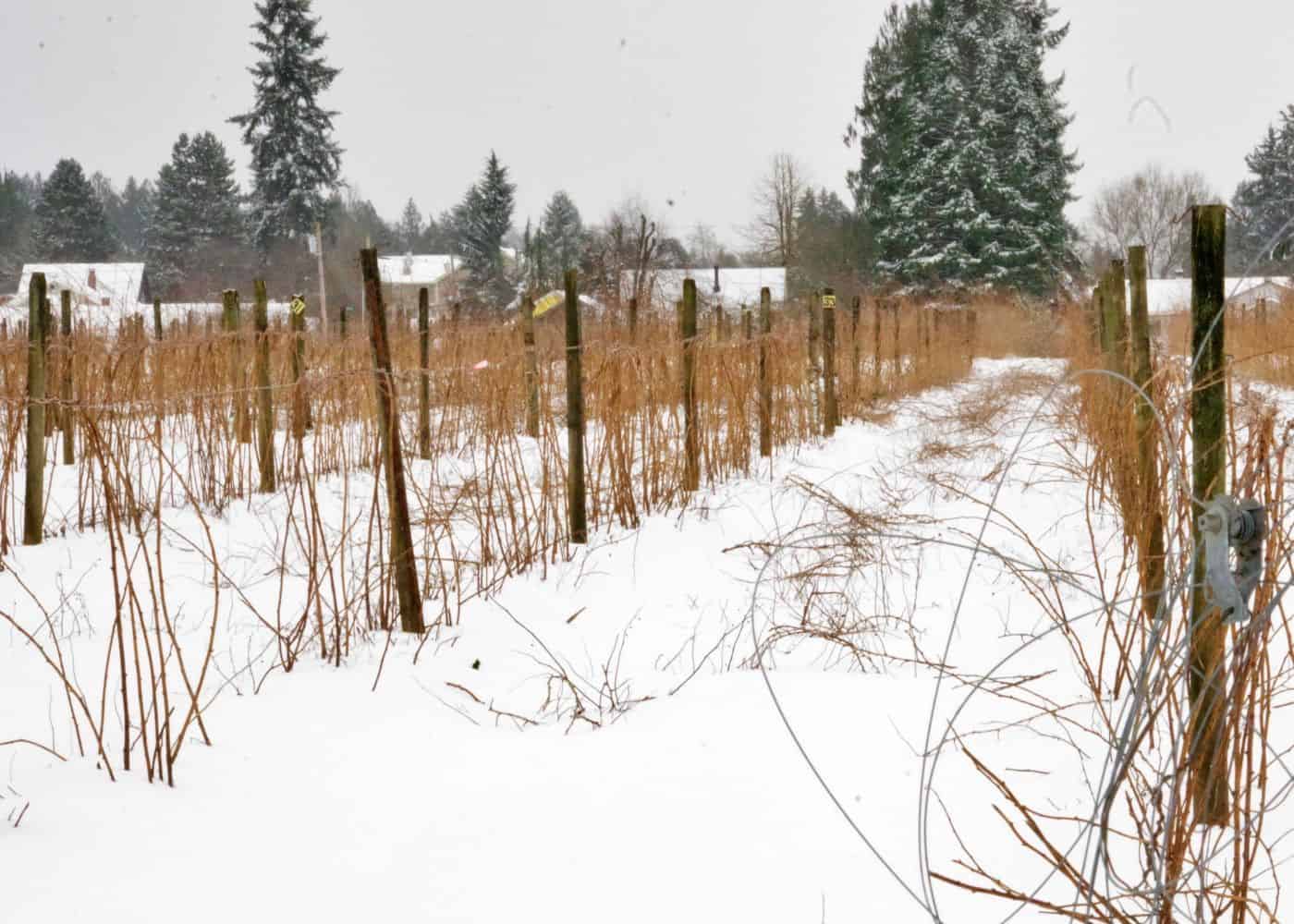
Cutting back raspberries
If you cut June-bearing raspberries back to the ground in fall or early spring, the new canes that come up won’t bloom or produce fruit that year. If you cut fall-bearing raspberries back to the ground in late fall/early spring, the new spring canes that grow up will bloom in the summer and produce berries in early fall.
If you have established plants and don’t know what the variety is, it’s often easiest to “reset” them and see if they bloom during the first year or the second year. Cut them back to the ground in the fall or early spring.
Watch them grow over the summer and see if they bloom. If they bloom and set fruit that ripens in late summer and early fall, then they are fall-bearing raspberries.
If the canes don’t bloom during that first summer of growth, they are likely June-bearing. If they haven’t bloomed by the fall, cut the canes to about 4-5 feet tall for the wintertime. These canes should then bloom in the spring on those 4-5 foot tall canes.
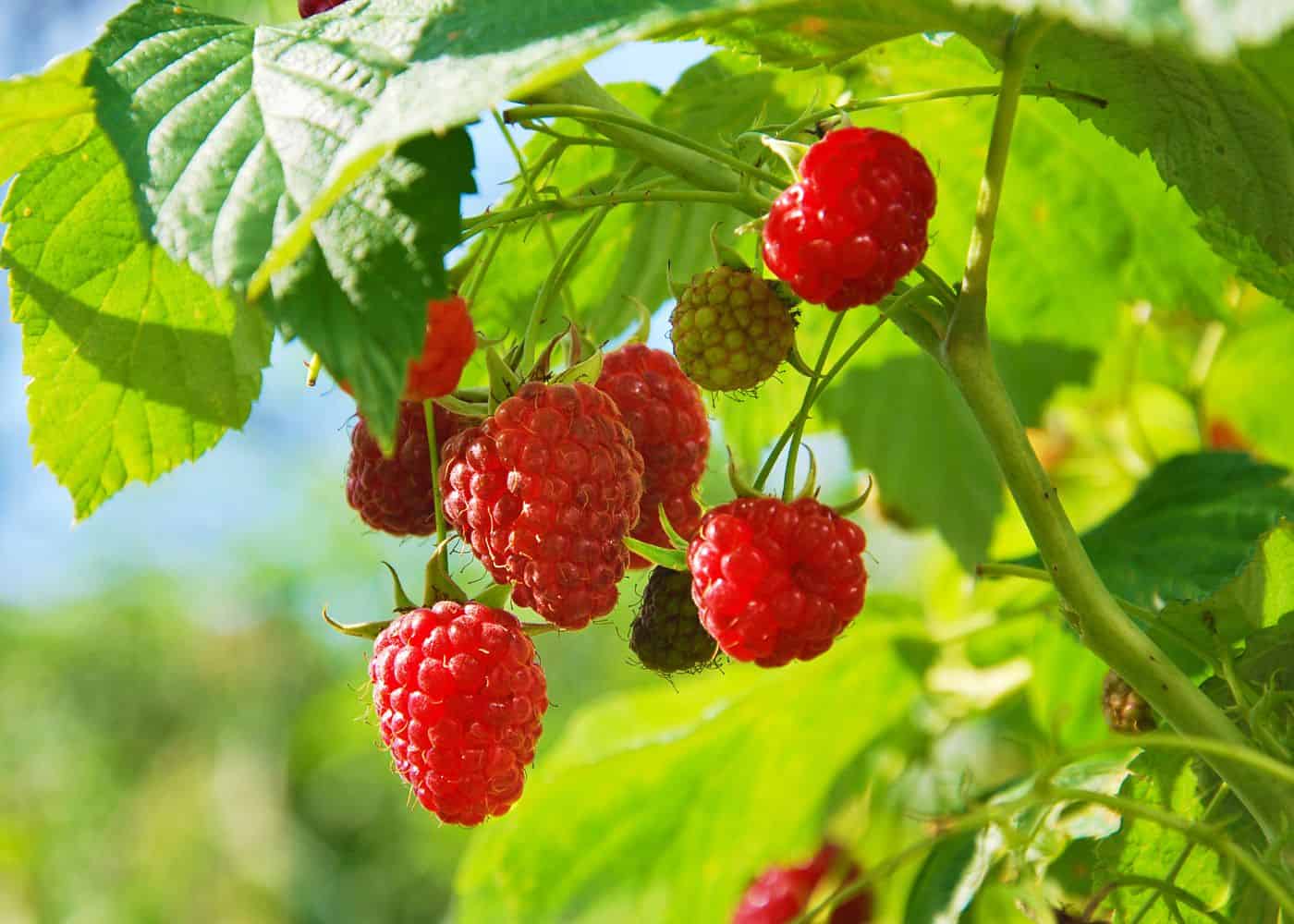
How to prune raspberries
To prune raspberries, start by determining what type of raspberries you have. June-bearing raspberries should be cut back to 4-5 feet tall every fall or early spring, while fall-bearing raspberries can either be pruned like June-bearing or cut back to the ground in the late fall after fruiting for one large crop. If you don’t know the variety, cut them back and see how they respond.
How to find out if your raspberries are June-bearing or everbearing/fall-bearing
To figure out if your plants are June-bearing or Everbearing/Fall-bearing, you can “reset” them by cutting them back to the ground in the fall or early spring.
Watch how these canes grow over the summer; if they bloom and set fruit that ripens in late summer/early fall, then they are fall-bearing raspberries. If the canes don’t bloom during that same summer, then they are likely June-bearing and should be cut back to 4-5 feet for wintertime. You must leave some wood standing through winter to get a crop off of June-bearing varieties.
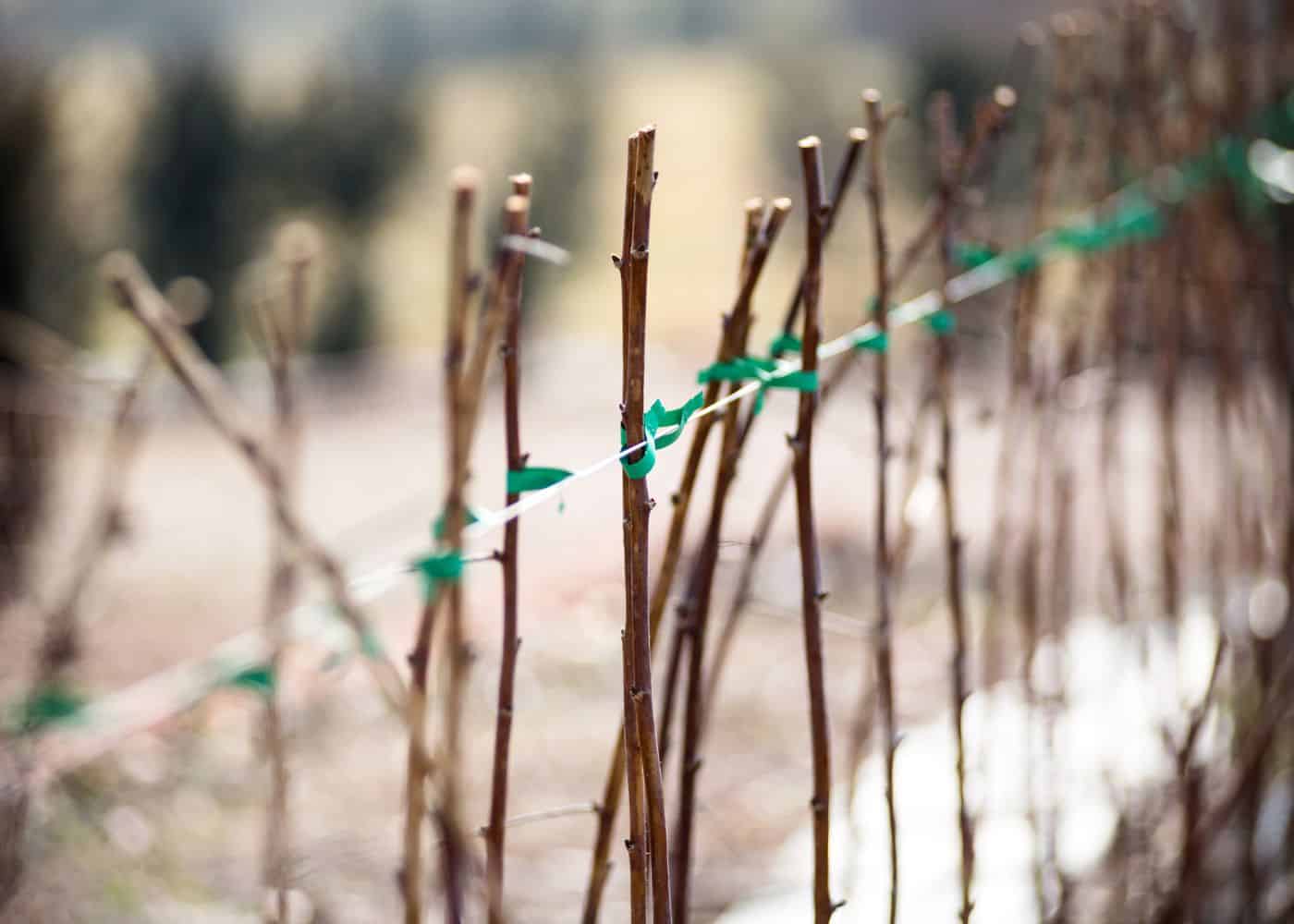
How to prune summer-bearing raspberries?
Summer-bearing raspberries are red and yellow varieties with canes that do not fruit in their first year but do produce berries in the second year.
Here are the basic steps to pruning summer-bearing raspberries:
- Cut all the old canes/canes that have fruited back to ground level. This should be done either at planting time (if using dormant plants) or in late fall/early spring.
- During winter dormancy, thin out the remaining canes by removing those that are thin, damaged, et cetera. Try to leave about 6″ between the remaining canes for good airflow.
- Shorten the remaining canes. For the biggest harvest, shortening these canes should be minimal. For easy harvesting and in windy areas, shorten the canes to about 6 feet (or whatever harvesting height is comfortable).
How to prune ever-bearing raspberries
Ever-bearing raspberries are red and yellow varieties with canes that begin to fruit at their ends in the autumn of the first year. The canes then grow fruit again lower down during the second summer of growth.
Here are the basic steps to pruning ever-bearing raspberries:
- Cut all the old canes/canes that have fruited back to ground level. This should be done either at planting time (if using dormant plants) or in late fall/early spring.
- During winter dormancy, thin out the remaining canes by removing those that are thin, damaged, et cetera. Try to leave about 6″ between the remaining canes for good airflow.
- Shorten the remaining canes by removing the tip that fruited in the fall. Everbearing raspberry fruit on the tips of each cane during the first fall, then on the bottom of the cane during the second summer. Trim off the top bit that has fruited (look for signs of blossoms/fruiting/stems, leaving the bottom portion to fruit next year.

When to prune raspberries
June-bearing raspberries should be pruned in fall or early spring, while fall-bearing raspberries can either be pruned like June-bearing or cut back to the ground in the late fall after fruiting for one large crop. If you don’t know the variety, cut them back and see how they respond.
